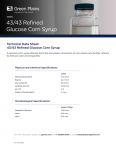Chewing simulator could optimise flavour release
food formulators by providing a more detailed understanding of
mastication and flavour release.
The device, while still only a prototype, could lead to a deeper understanding of flavour release and improved formulation of foods to maximise the flavour, the measurement of which is restricted by current common techniques. How consumers sense food is crucial knowledge for a food industry constantly organising the building blocks of new food formulations. "We have thus developed a functional device which can precisely reproduce the compressive and shear strengths of a human jaw causing the breakdown of food with sufficient reliability when compared with in-vivo measurements," state the researchers in the Journal of Food Engineering. Lead author Christian Salles from the University of Bourgogne (Flavic UMR1129, INRA) and collaborators from the Creusot Technology Platform have developed a prototype device to simulate chewing and mimic human mastication. The device is reported to reproduce most of the functions of the human mouth and includes a movable lower jaw (mandible), an actuated tongue, and a fixed upper mandible. Artificial saliva can also be introduced into the device. Flavour release is measured by using on-line atmospheric pressure ionisation mass spectrometry (API-MS). Four volunteers, asked to chew three peanuts and then to spit them out after four and eight chews, compared the efficacy of the device on peanut chewing to human chewing. The Dijon-based researchers report that the chewing simulator could reproduce all inter-individual differences on peanut breakdown by subtly adjusting shearing and mandible forces. "In terms of perspectives, we have planned to validate the functionality of the system using a variety of foods such as dairy, meat and bakery products," wrote Salles. Development is ongoing, and the researchers intend to extend the capabilities of the device to mimic swallowing and throat movements. "The mimicking of physiological functions such as swallowing and throat movements are very important to the study of flavour release," they said. Taste is a key driver in the €3.2 trillion global food industry and a greater understanding of the physiology of consumers, could lead to strong market advantages. Source: Journal of Food Engineering Published on-line ahead of print, doi: 10.1016/j.jfoodeng.2007.02.008 "Development of a chewing simulator for food breakdown and the analysis of in vitro flavor compound release in a mouth environment" Authors: C. Salles, A. Tarrega, P. Mielle, J. Maratray, P. Gorria, J. Liaboeuf, J.-L. Liodenot













